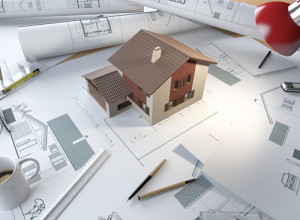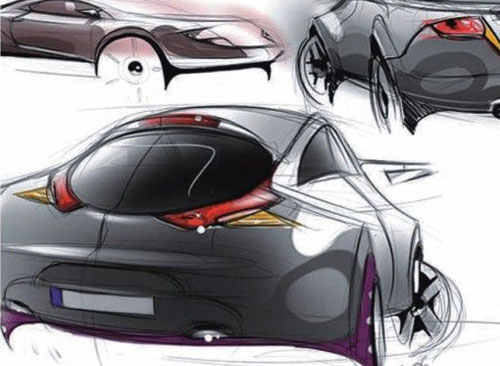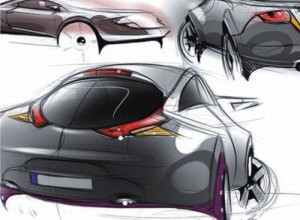 Building information modeling (BIM) is an assimilated procedure built on synchronized, consistent information about a project from design through construction and into operations. BIM is a way of conducting business; a method of collaboration between architects, engineers, manufacturers, developers and contractors that develops the efficiency and accuracy of the design, construction and management of construction projects. BIM allows engineers more easily to estimate the presentation of projects before they are built; respond to plan changes faster; enrich designs with examination, recreation, and conception; and deliver higher quality construction documentation. BIM assists stretched teams to extract valued data from the model to ease earlier decision making and more cost-effective project delivery.
Building information modeling (BIM) is an assimilated procedure built on synchronized, consistent information about a project from design through construction and into operations. BIM is a way of conducting business; a method of collaboration between architects, engineers, manufacturers, developers and contractors that develops the efficiency and accuracy of the design, construction and management of construction projects. BIM allows engineers more easily to estimate the presentation of projects before they are built; respond to plan changes faster; enrich designs with examination, recreation, and conception; and deliver higher quality construction documentation. BIM assists stretched teams to extract valued data from the model to ease earlier decision making and more cost-effective project delivery.
BIM and its Strength
BIM is a project life-cycle system that results in a virtual information model passed from the design team of architects, surveyors, engineers to the contractor and the subcontractor and then to the owner. BIM’s strength is in its ability to detect struggles initially itself to eliminate cost exorbitant changes needed later in the construction process.
BIM can be used to identify spatial conflicts, for example if plumbing doesn’t relate with the space planning or where an electrical box is put up at an inappropriate place. The architect and engineer change the design and the general contractor uses BIM software in concert with estimating software to identify these types of encounters.
To implement a BIM process for road and highway design starts with the designing of synchronized, consistent design information about the project which results in an intelligent 3-D model of the roadway in which dynamically related elements of design are placed. BIM is not only points, surfaces, and alignments, but a rich set of information and the features connected with it.
BIM enables estimation of many more design options. Civil engineers impact the information model to conduct simulation and analysis to improve the design for objectives such as constructability, sustainability, and road safety. Ultimately with a BIM process, design deliverables can be created directly from the information model. Deliverables include not only 2-D construction documentation, but also the model itself and all the rich information it encompasses, which can be leveraged for quantity take off, construction sequencing, as-built comparisons, and even operations and maintenance.
Cost benefit analysis can be carried forward much faster with BIM because multiple options can be considered before the foundation is laid on a project which ultimately enables the contractors to provide accurate estimates to the owners on specific ways to save money. BIM gives the ability to see the exact result based on any changes to construction plans. BIM programs serves as a prerequisite for bidding on construction projects and it is changing the way buildings, infrastructure, and utilities are planned, designed, built, and managed. Autodesk BIM solutions help change information into vision and deliver value to the business at every stage in the process.
Limitations to BIM
Software and Hardware Costs – Every organization which makes use of 2D or 3D CAD drafting software attributes a cost factor against the purchasing, maintaining and upgrading expenses to maintain a competitive edge in the market. The present trends show that BIM software packages are more expensive in the market than the CAD software.With the introduction of BIM software, the necessities on hardware have increased meaningfully. CAD software can be activated even with limitations on immense professional laptops but the BIM software requires a dedicated high-specification workstation and an advanced modeling and rendering software to operate.
Training Costs – The new software (BIM) demands to train the staff quickly so that the investment can be reasonable. It is unrealistic to assume that professionals with the CAD proficiency will be able to learn new BIM software automatically or without focused training. The vital difference between BIM and CAD makes it essential that training should be essentially given to all professionals involved with designing and producing documentation. Investment in training provides the organizations a competitive edge with projects that have clearly specified requirements which are documented making use of BIM.
Changeover from drafting to modeling – When shifting from a CAD-based drafting setting to a BIM-based modeling setting, an alteration in the workflow will affect the simple drafting tasks such as copying markups or picking up redlines will now require a higher-level skilled design drafter who has a better understanding of the project and the materials used. The costs combined with training and sustaining a skillful design modeler is much higher than employing a draftsman with no knowledge of the trade. The transition from traditional CAD will also require an increased level of responsibility on the designer to make sure that all the system components are synchronized with the other design professionals like, architecture and engineering services and minimum or reduced site issues too.
Compatibility between software platforms -The issue of inter-product compatibility is one of the biggest problems with the early adaptors of BIM because every software manufacturer is doing something altered with its software. This interoperability challenge can make it difficult for projects to function if different team members have different software packages. This interoperability issue is not restricted to different software platforms because of the rapid development of the BIM software industry newer versions of programs within the same platform can have interoperability issues.
Revolution – The goal of BIM is to assign constraints and parameters to intelligent objects to improve efficiency so there is a potential to hinder innovation which would possibly otherwise occur without the automated processes and shared knowledge that BIM now gives. Those firms implementing BIM should see the parameters and metadata limitations as a global database that allows designers to save time associated with updating and configuring product-specific data repetitively on different projects, hence increasing the amount of time spent on system design and innovation.
The audiovisual professional has open opportunities with BIM to add more value to the project team. BIM is an important revolution in the construction and building management industries, and firms that would quickly become proficient adopters and have an edge on the competition. The audiovisual firms can use BIM to create new revenue streams and increase their profitability with increased profitability, reduced professional risk, less waste, less rework and improved efficiency. BIM will be the main method in the future to construct buildings and manage them. It is essential for the audiovisual firms to become primary and professional adopters of this technology and clinch the associated cultural change to ensure the growth of our industry.
 Hard skills can be learnt from school and books and usually have a nominated level of proficiency along with a direct way to outshine with each hard skill.
Hard skills can be learnt from school and books and usually have a nominated level of proficiency along with a direct way to outshine with each hard skill.







